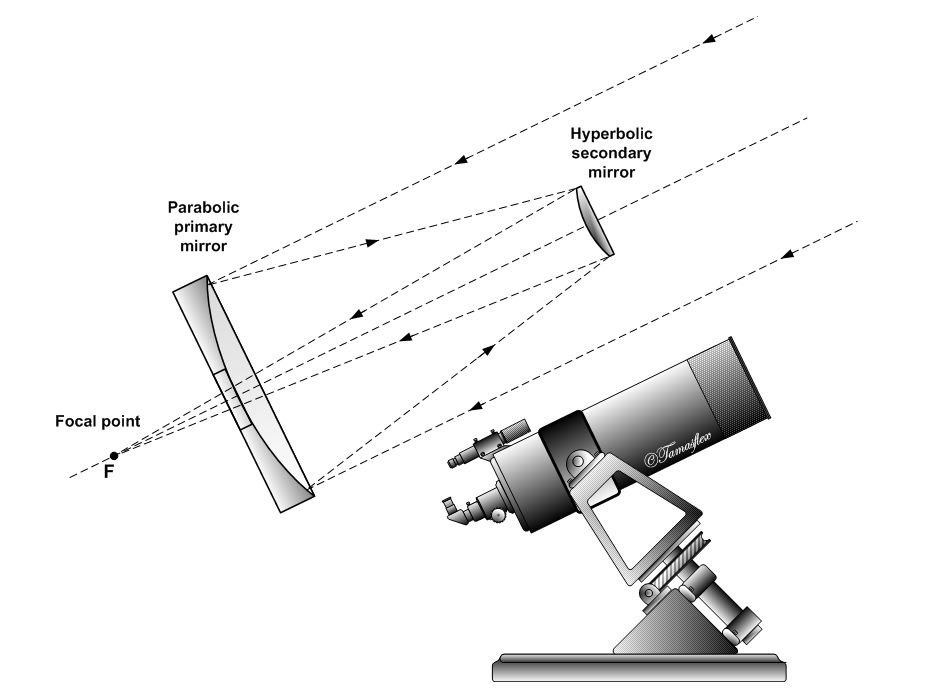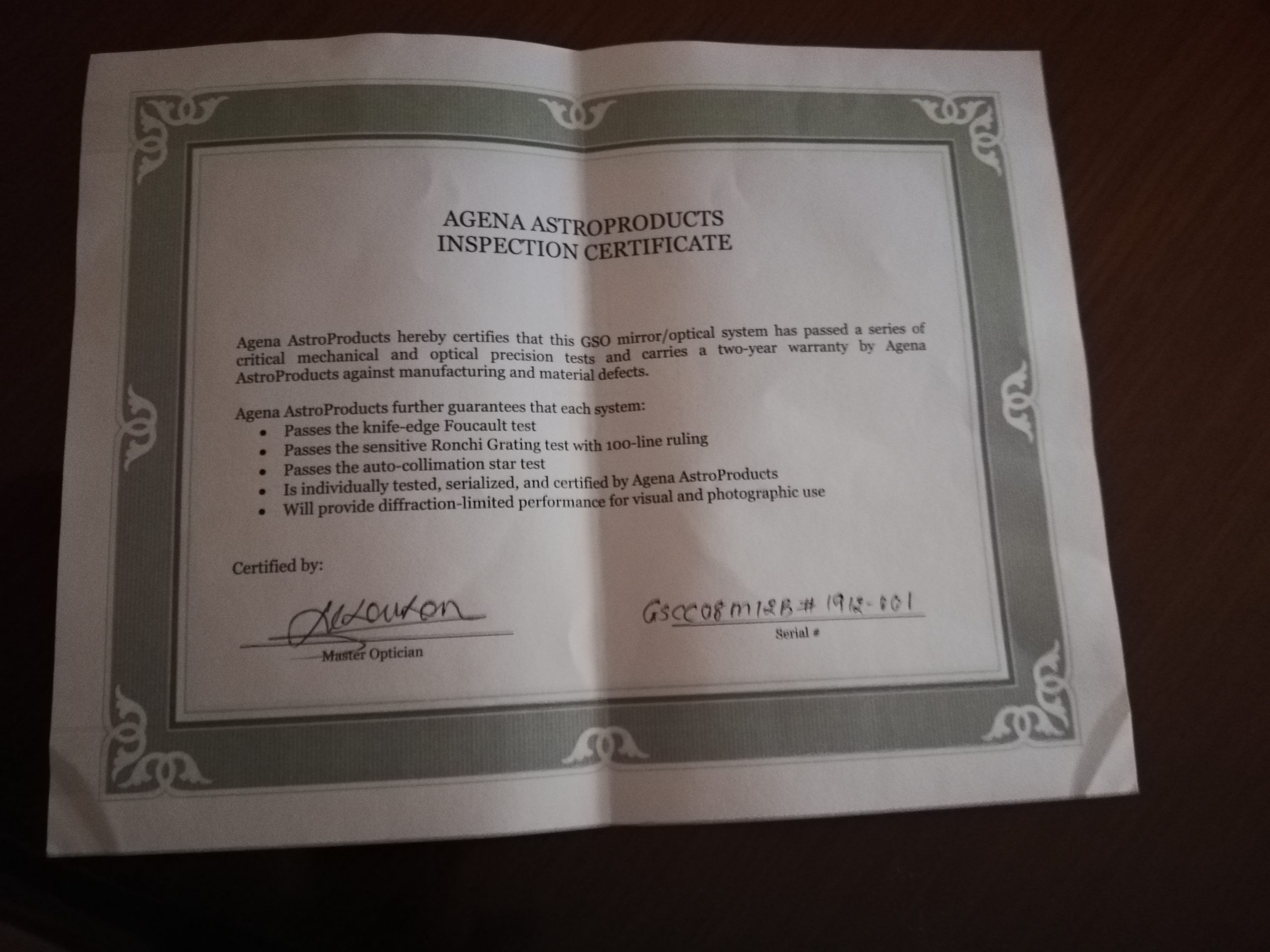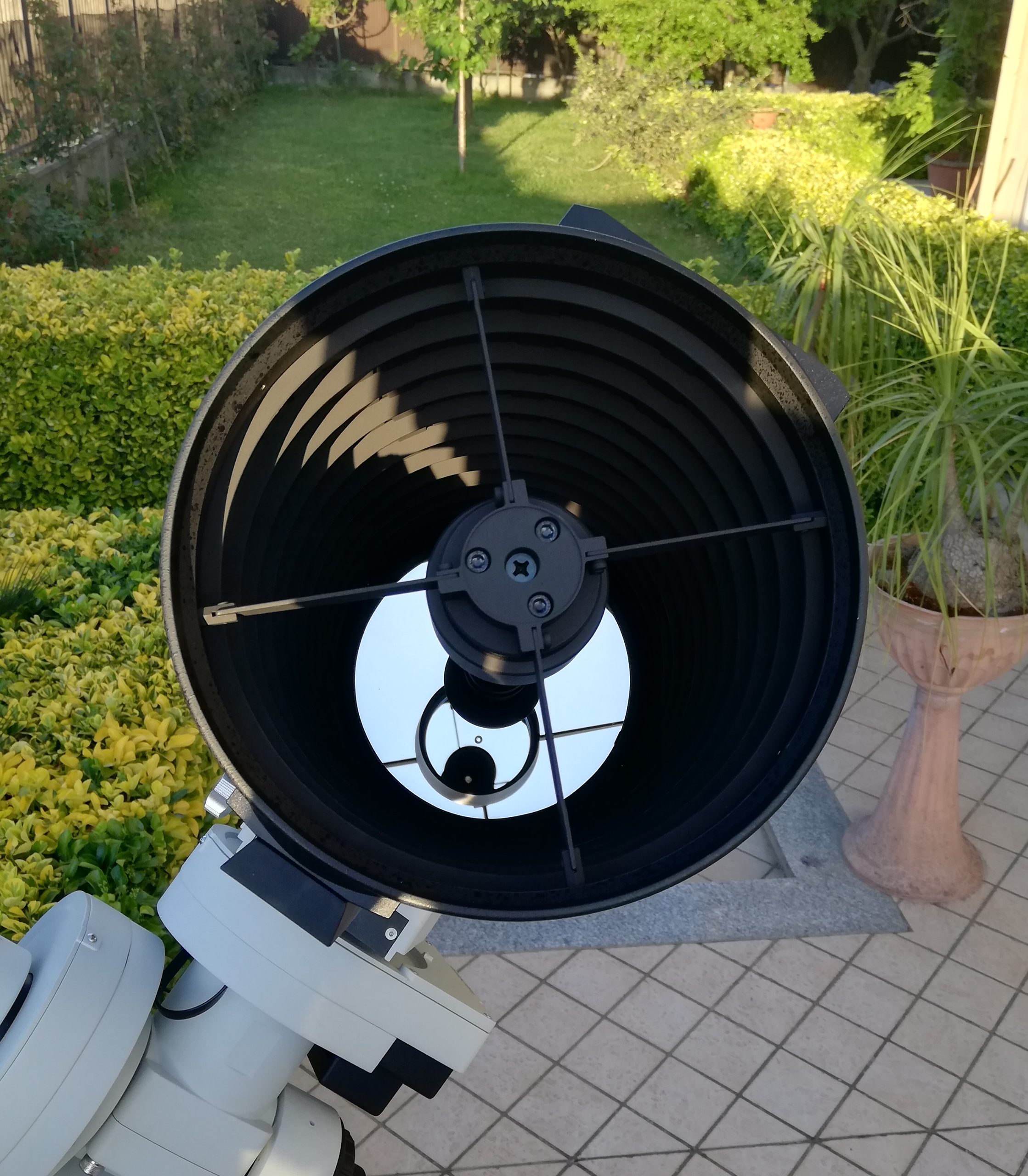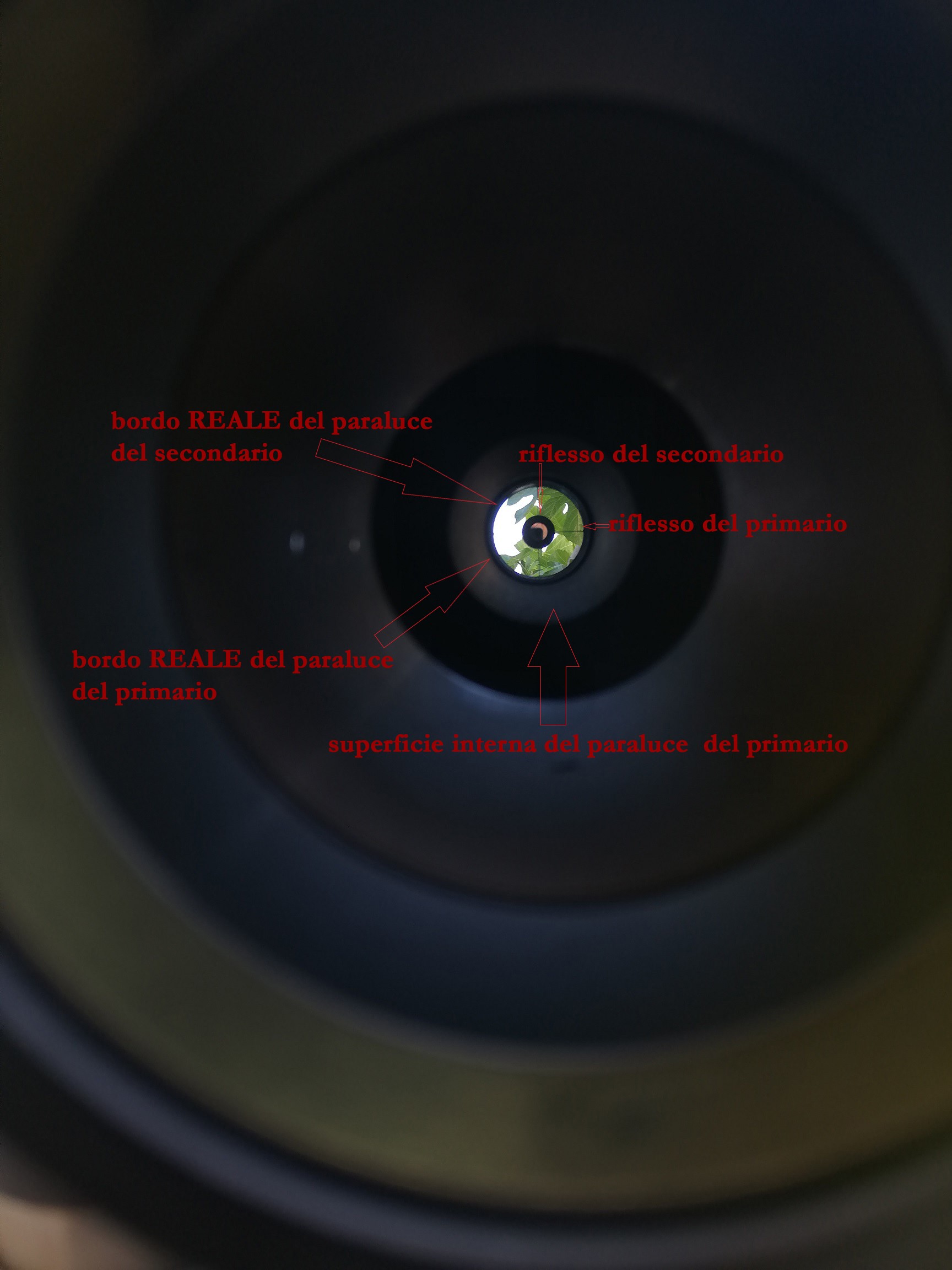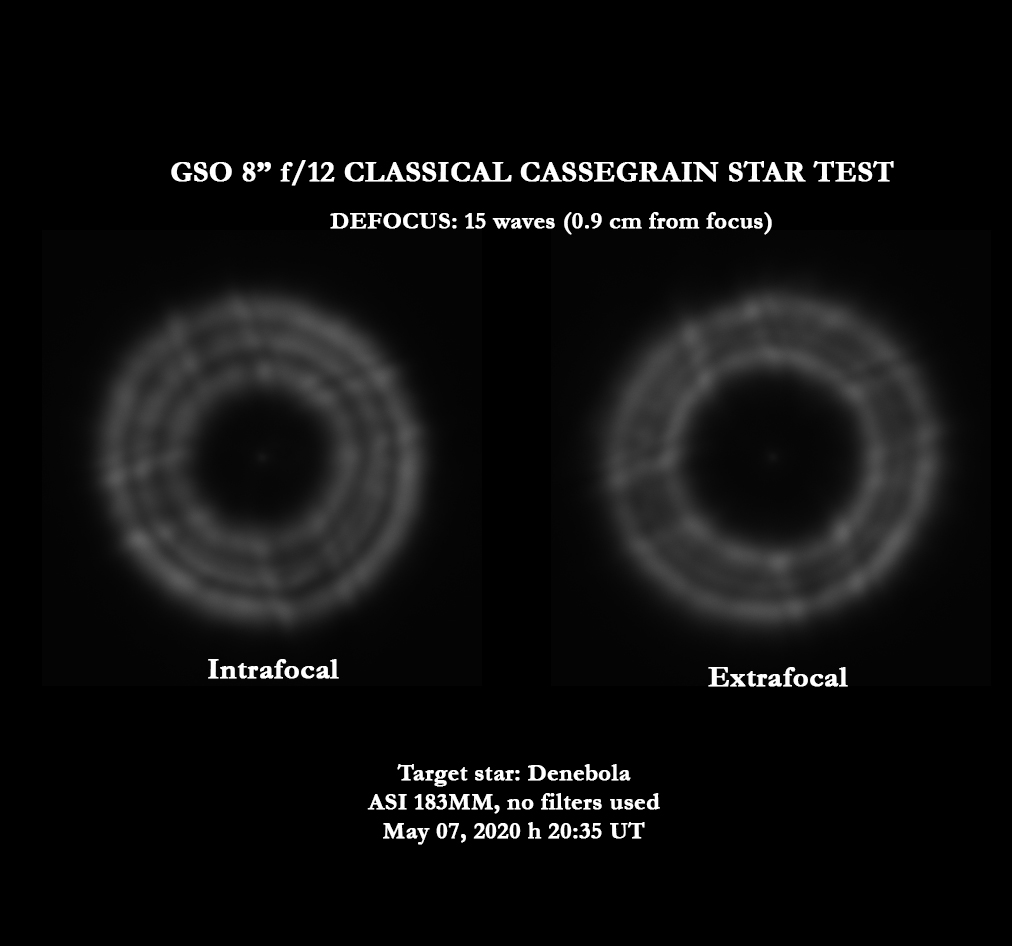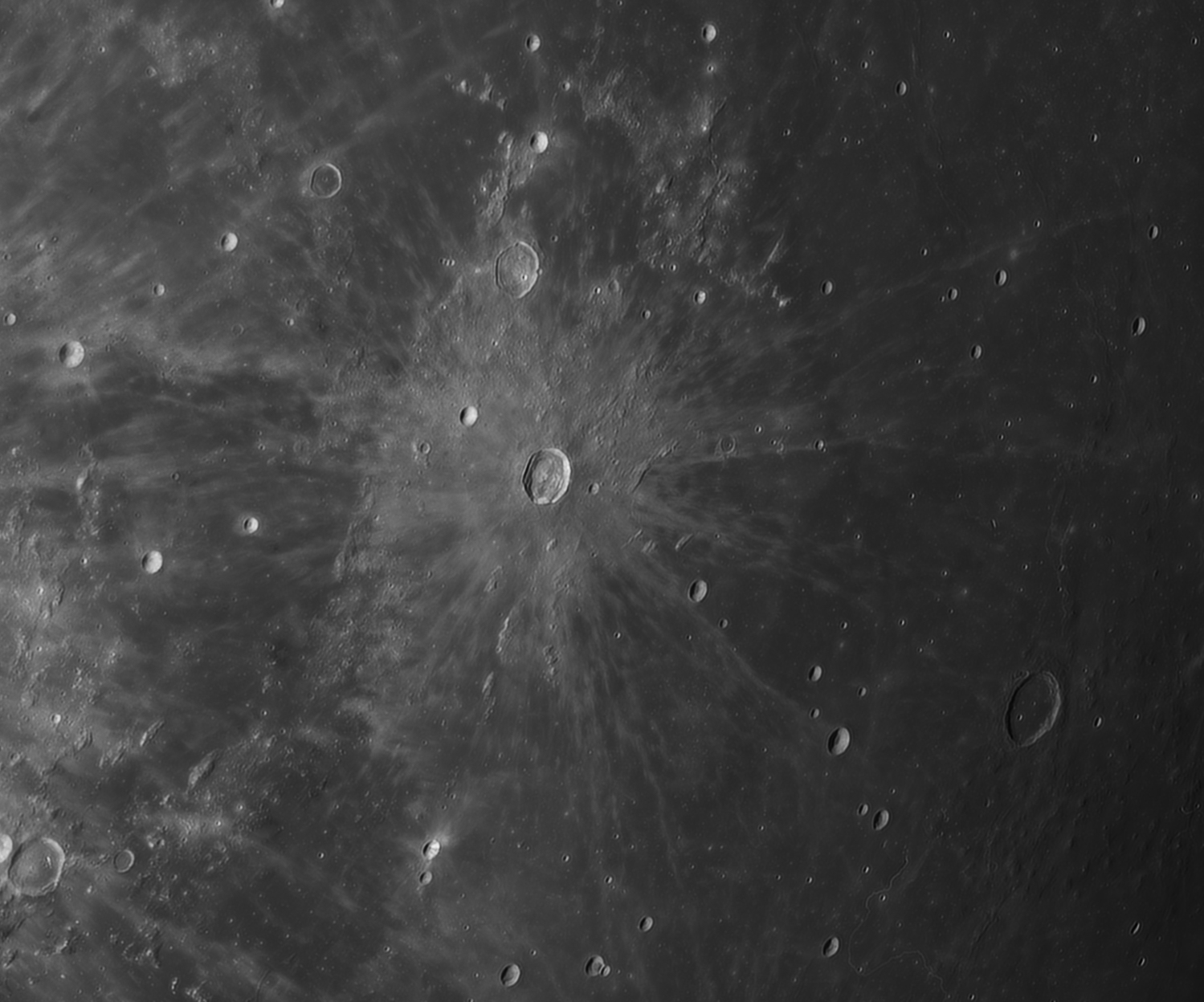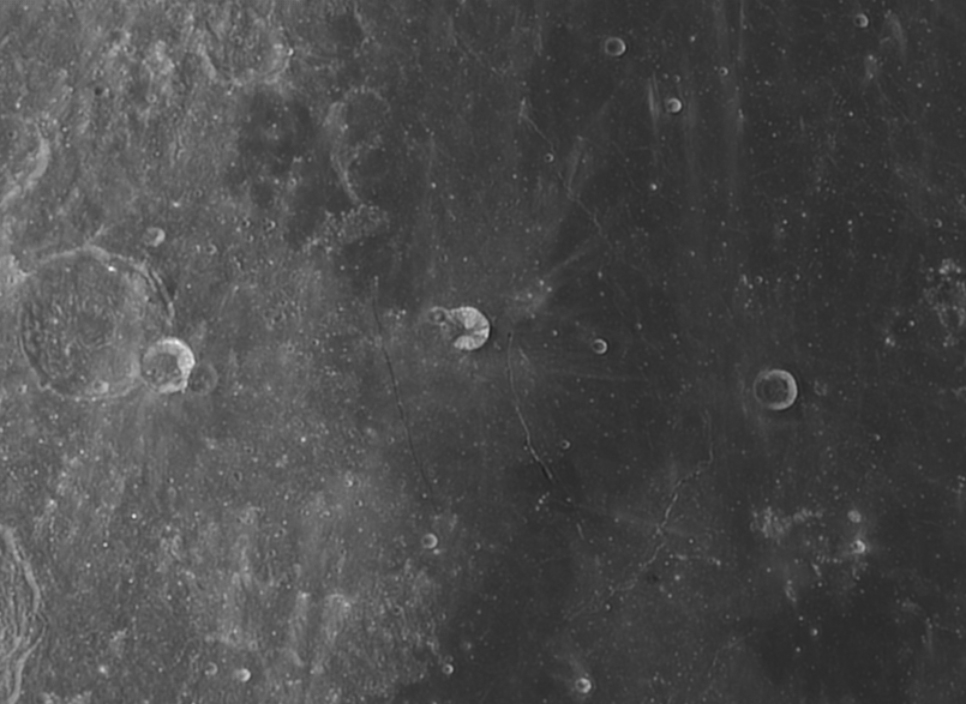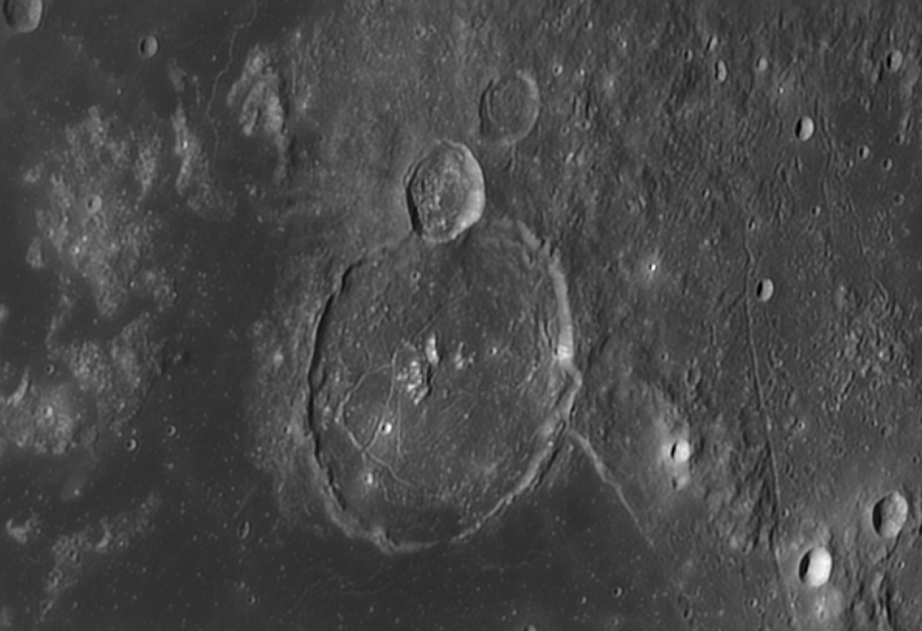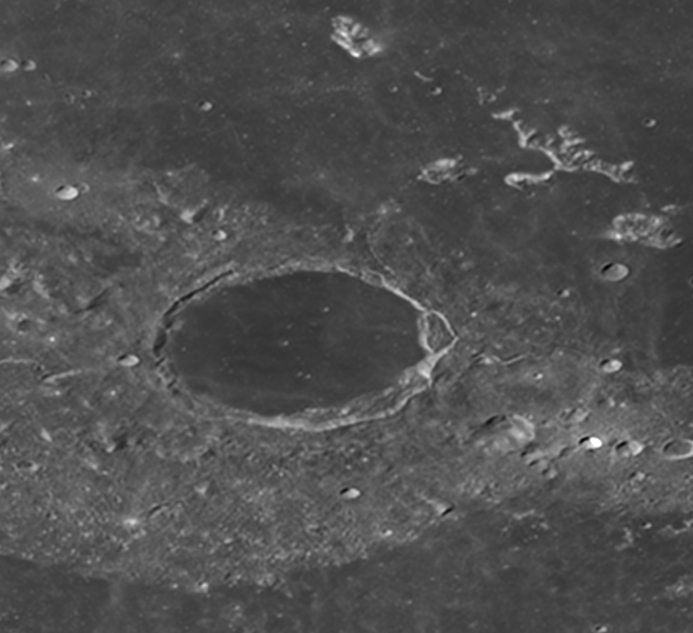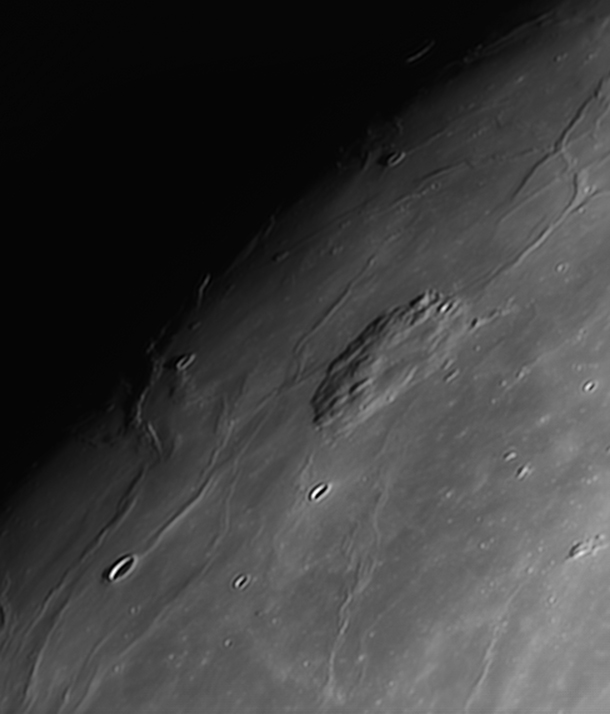The classical Cassegrain, as the name suggests, is one of the most consolidated optical designs. Its origins date back to the mid-17th century, when Father Mersenne (Descartes' friend) described the optical properties of a reflector with two mirrors, one concave with holes and the other convex. A few years later, and apparently without being aware of Mersenne's results, Professor Laurent Cassegrain patented the optical scheme that bears his name, which was however only of academic interest since no one knew how make aspheric surfaces (including Newton himself). Cassegrain design indeed has both the mirrors aspherical, more precisely a parabolic primary and a hyperbolic secondary, and two centuries will be necessary to see the first telescopes created by the opticians.
The light collected by the main mirror is intercepted a little before converging towards its own focus by a secondary mirror, which sends it back (this is why this are referred to as folded design). The primary is then drilled to make the focal plane located a little further back accessible, while the hyperbolic has the important function of magnifying the focal length of the main mirror. The great compactness that characterizes this optical scheme is essentially due to this: in practice, their effective physical length is always much smaller than their focal length.
The main issue of Cassegrain lie in the secondary, which is difficult to figure correctly and test, and in the coma, which becomes problematic if you want large, corrected wide-fields as in astrometry work. The field curvature is also more pronounced than that of an equivalent Newton. Relaxing one or the other constraint gave rise to a whole series of derivatives, many of which are still in use today: the Dall-Kirkham, for example, has a spherical secondary (much easier to make than the hyperbolic one), while the Ritchey-Chrétien, at the price of having both mirrors hyperbolic, offers very large flat and coma-free fields. To these are added the Schmidt-Cassegrains, the Maksutov-Cassegrains, and others.
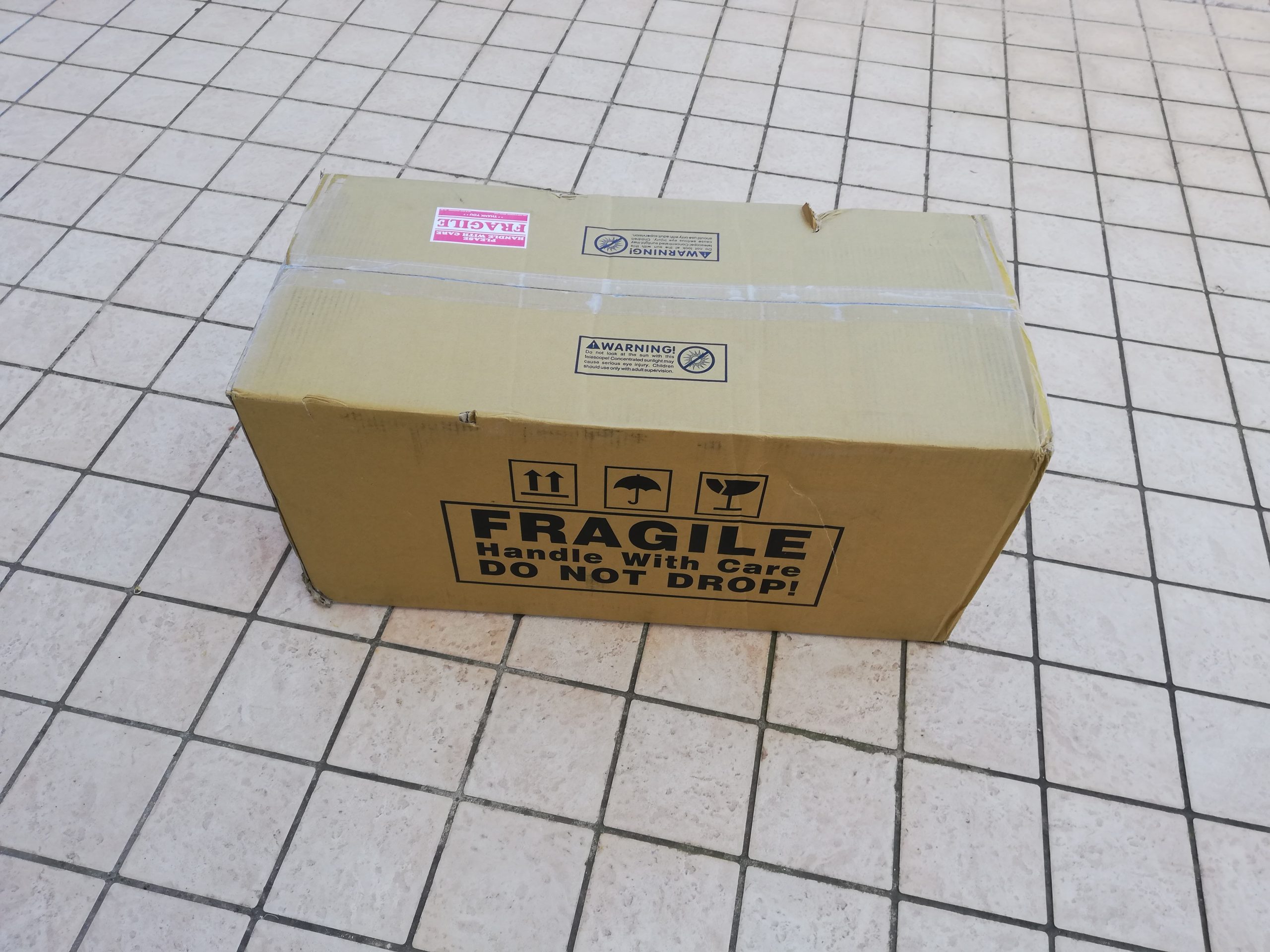
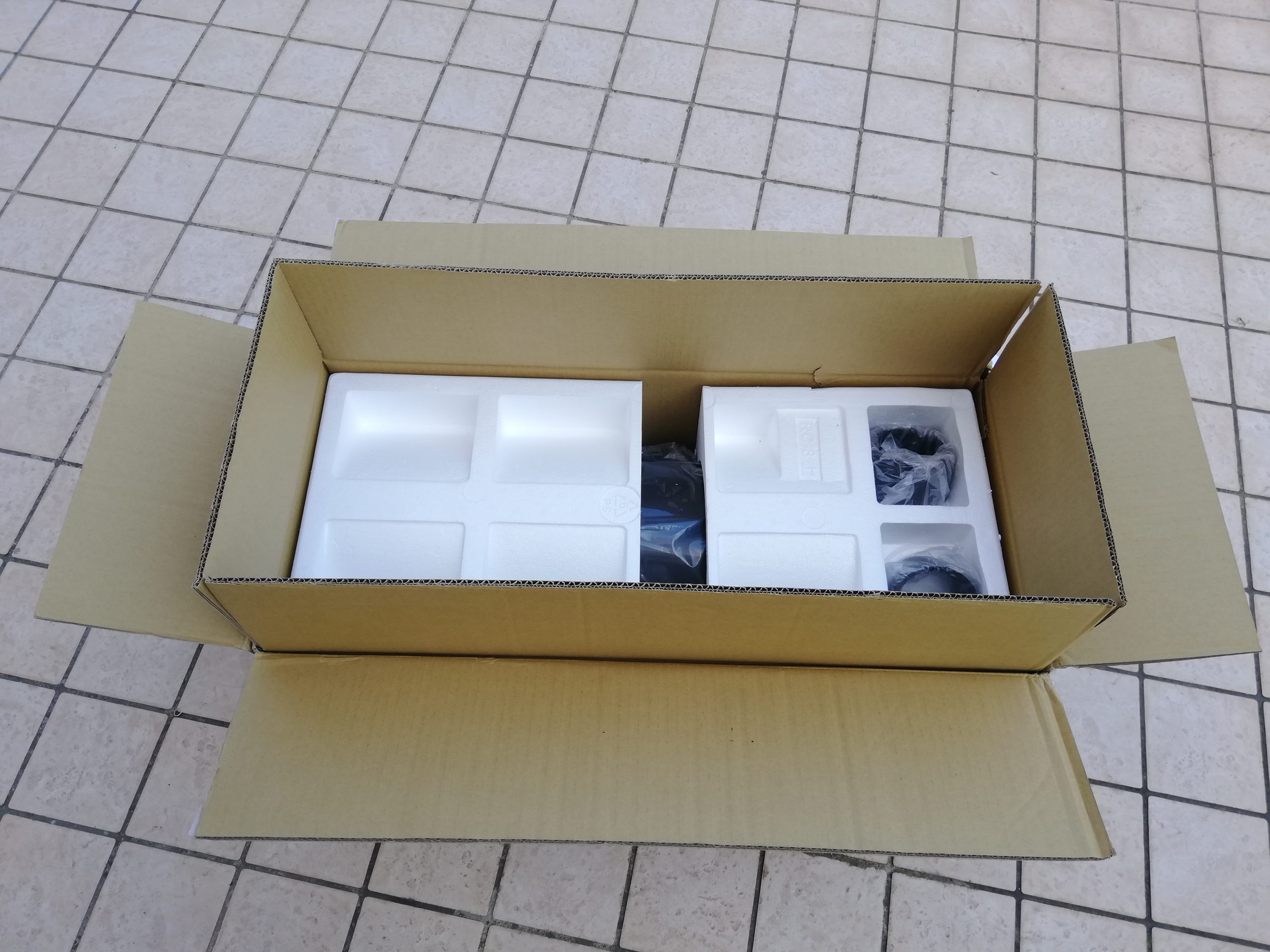
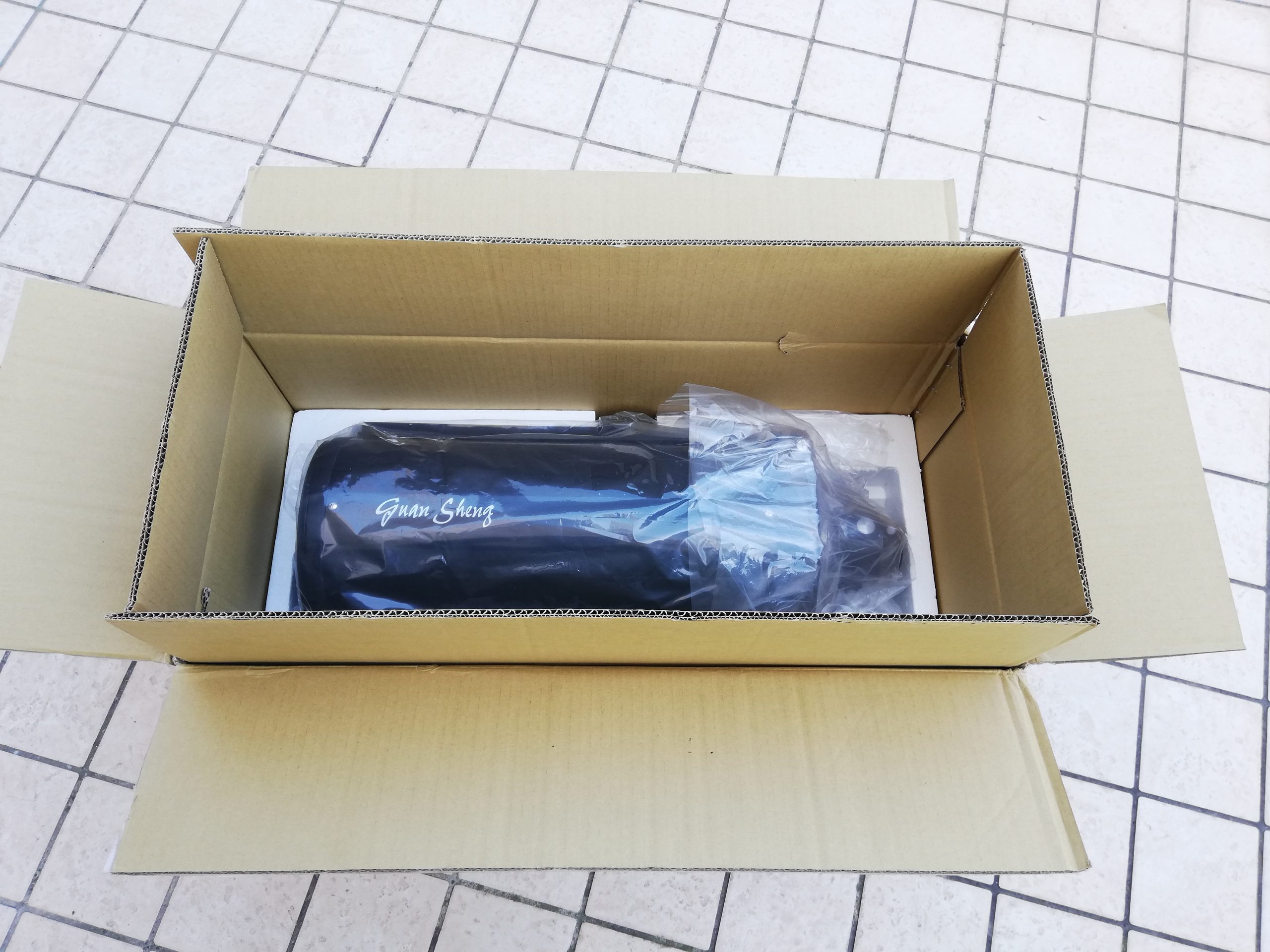
The GSO of Taiwan recently launched two interesting instruments: a classic 6″ f/12 Cassegrain, accompanied by its bigger brother 8″ f/12, occupying a market segment largely the prerogative of the Newton or Schmidt-Cassegrain. The telescopes, with negligible differences, are marketed by other brands (Orion, Teleskop Express, etc.) but the design is the same.
The scope discussed in this review is the 8, ordered from Agena Astro in the USA. I preferred to buy from them above all for the additional tests to which each specimen is subjected, certified by a document issued together with the telescope (see image). Agena offers this service for free, although we Europeans end up paying for it in the form of customs duties and shipping costs. The telescope arrived well protected in double packaging, without any trace of scratches or bumps and well collimated. The writing "RC8" can be read on the shaped polystyrene, confirming the suspicions of partial reuse of some components already used for the Ritchey-Chrétien of the same manufacturer.
The telescope comes with 2 bars (one Vixen and one Losmandy), a GSO focuser and 3 extensions, necessary to reach the focus. One is 2 inches (5 cm) and two are 1″ long. The focuser, of the Crayford type, is quite light and robust, with a millimeter scale on the drawtube and a 1:10 micrometric reduction knob, with the possibility of rotating on itself.
Below some measurements made on the scope:
– Effective weight without focuser: 6 kg (without the Losmandy bar which weighs 700g, and which should be dismounted if one is using the Vixen)
– Actual length with focuser and without extenders: 64 cm
- Secondary baffle diameter: around 70 mm
– Real obstruction: 35% (see below)
– OTA internal diameter: approx. 23 cm, 1 inch more than the primary
It is therefore a very compact instrument, a few centimeters longer than the natural competitor C8 f/10, and a few ounces heavier. However, the first characteristic is not necessarily a drawback, because the center of gravity far from the primary allows an easy balancing in declination without the addition of expensive counterweights to attach to the saddle.
Classical Cassegrain and its numerous derivatives, as is known, require a baffle on both mirrors to limit the phenomenon of sky-flooding, (that is the glare resulting from the eyepiece looking directly the sky) unlike lateral focus instruments such as Newtonians. The actual obstruction is therefore measured by the diameter of the secondary lens hood, and not by the diameter of the secondary itself. The obstruction was thus equal to approximately 35%, a good compromise value also for lovers of visual observations. Instruments with a higher focal ratio (f/18 or f/20) which would have appealed to the high resolution enthusiast, would have been less obstructed but also much more specialized, and it is probable that this too influenced the choices of the designer who favored the versatility of an all-rounder.
The secondary mirror is supported by 4 rather thick vanes (2 mm) which add a negligible amount to the obstruction, and give rise to 4 diffraction spikes, but on the other hand guarantee a good stability of the collimation which is maintained even after long meridian jumps. The mirror can be collimated using 3 Allen keys, and has a central mark to help in the alignment procedure which is worth focusing on.
***
Classical Cassegrain collimation, which could scare many amateur astronomers, is actually quite simple if you have clear what you're doing, even easier than that of the Newton as it lacks the 45 degree lateral beam. The only device you really need is a collimation cap, priced just a few euros (this cap, strangely enough, is not supplied). I don't particularly like lasers, which also become discollimated and which tend to lose alignment during tightening.
E’ importante anzitutto identificare bene tutti gli elementi che si vedono, e distinguere quelli reali dai loro riflessi, come peraltro richiedono anche i Newton. La collimazione si esegue di giorno, puntando lo strumento contro il cielo chiaro o comunque in un ambiente bene illuminato. L’immagine sotto proposal, taken from the eyepiece holder without the perforated cap, gives an idea of what you see when the instrument is well aligned and helps to identify useful references. What you see are, in reality, almost all reflections: the only real element is the mirror with its lens hood and its adhesive marker. The edge of the primary lens hood is also real, but it is not used to collimate the optics, so once identified, it can be ignored. These last two elements, if the instrument is well designed, when seen from the focal plane have practically the same diameter, and for this reason it is difficult to distinguish them.
1) Per prima cosa occorre collimare il secondario, che deve “guardare” tutto il primario. Ci si posiziona all’oculare, con il cap forato montato, e con l’aiuto dell’adesivo si agisce sulle 3 viti del secondario finché il riflesso circolare del primario non appare centrato. E’ fuorviante, in questa fase, concentrarsi su altro. Ci può aiutare svitando il paraluce del primario, in modo da avere una vista meno ostruita. Fatto questo, il riflesso del primario deve apparire centrato, ma quello del secondario (cerchio nero interno, vedi immagine) probabilmente apparità disassato.
2) Si deve quindi collimare il primario, ossia riportare il riflesso scuro del paraluce del secondario al centro del riflesso del primario, che se abbiamo correttamente eseguito lo step precedente apparirà come un cerchio luminoso ben centrato. Usiamo le 3 viti a brugola sulla culatta, avendo cura di allentare i 3 grani di fermo prima di procedere agli aggiustamenti necessari, e facciamo attenzione a non confondere il riflesso del paraluce del secondario con il riflesso del supporto del paraluce del primario (nell’immagine sotto, per semplicità, è indicato solo il primo). Aiutiamoci poi con gli spider del secondario finché la vista sia ben simmetrica. Se tutto è stato eseguito accuratamente, la vista dal portaoculare deve essere simile a quella riportata nell’immagine.
The secondary is generally adjusted only once, while the primary will probably need some small additional adjustments from time to time, which is best done on a real star.
The star test was made on a spring night with average seeing on Denebola (see image below) and demonstrates that we have really good optics for a commercial OTA, and not an easy one to make. The test was performed (contrary to many of those seen online) close to the focus, about 1 cm, and is therefore extremely sensitive. This must be kept in mind if you do not want to overestimate errors.
The main aberration is a slight astigmatism, detectable by the oval shape of the star which rotates at a right angle passing from one side of the focus to the other (IF stands for intrafocal, EF for extrafocal). Furthermore, it is not certain that it is in the glass, as it could be induced by some tension. I consider negligible the spherical aberration, although from a first look at the shadow of the secondary it might seem important, for several reasons:
- Star test was made quite close to focus, as I said;
– Ronchi grating showed 3 or 4 regular straight lines;
- A preliminary Roddier test has shown an excellent SA correction;
– The brightness profile of the defocused star is regular, without bright rings on the outer edge or around the secondary shadow, which clearly on the contrary mean SA;
- Snap test is very accurate.
In practical terms, because of the sensitivity of the sensors and the strict testing conditions already mentioned, at the eyepiece the two intra- and extrafocal images are very similar.
The Cassegrain is a design with an intrinsic high degree of correction, although it works best at high focal ratios (f/15-f/20). It was not possible for me to find precise data from the manufacturer, probably fearful of reverse engineering by some competitor, regarding the focal ratio of the primary, which from my calculations should be equal to or slightly higher than f/3 , nor about backfocus which I estimated at around 25 cm. The fully illuminated field was instead communicated to me by Agena, resulting in it being equal to 15 mm.
Field testing was overall very positive. The instrument soon reaches temperature, and I noticed neither heat plumes nor noteworthy disturbances attributable to instrumental turbulence. The manufacturer declares that the mirrors are made of quartz, a rather expensive material that has very low thermal expansion and allows more accurate figuring of the mirror surface. I confess that I was initially rather skeptical about it, for a telescope of this cost. However, having transported the instrument from inside to outside and prepared to observe almost immediately, I did not observe the effects of the thermal transient of the glass on the defocused star, which agrees well with the properties of the quartz. It should be said that the temperature gradients in this period (end of April) are quite mild, and it is necessary to wait for the winter period for a more precise evaluation.
Classical Cassegrain is not as tolerant as SCTs regarding the distance between the mirrors, which should never deviate much from the design value. It is possible (although in practice not recommended, unless there are particular needs) to change the distance between the mirrors by unscrewing the ring located near the secondary baffle, which can thus move axially. Obviously by doing this you will also modify the backfocus (and quite a bit!) and the focal length, as well as introducing the spherical aberration, and it is therefore recommended that this operation is carried out by an expert.
As mentioned, the instrument is provided with various spacers. With a 1 1/4″ Baader prismatic diagonal, and obviously the focuser mounted, the focus is achieved with the 2″ spacer. The others are useful if you are doing imaging, where there is no diagonal to 2 "eat" backfocus.
With the 24 mm Panoptic it was possible to notice a slight elongation of the stars at the edges of the field, but very subtle and not at all annoying. With the same eyepiece the “Double Double” in Lyra already appeared in its 4 components, proving the pinpoint stars made by the OTA. Even Izar (3″ separation) in the Boote was easily separable with the 9mm Plössl and very enjoyable, thanks to the purity of the colors.
The sharp lunar panoramas were no exception: I also managed to spot two or three of the 4 largest craters inside Plato. The turbulence, unfortunately, did not allow me to push the magnification.
When the weather and seeing will be better, it is my intention to supplement this review with images taken with the instrument and a Roddier test.
***
In conclusion, it is really difficult to ask for more from an instrument in this price range (it is offered at around 1000 euros). The purely catoptric scheme, i.e. composed only of mirrors, presents all the advantages deriving from the absence of a corrector plate: faster temperature entry, no dew problems, and equal efficiency in all wavelengths (absence of spherochromatism). Since the distance between the two mirrors is fixed, the inconveniences linked to the infamous movements of the Schmidt-Cassegrain primary mirror (mirror flop) are also absent. Finally, the limited weight and lenght make it perfectly marched to a cheap mount: the AVX is perfect for this telescope.
Only pro's then? Unfortunately not. The instrument, from some measurements made, seems to have a slightly undersized secondary, so that its useful aperture is a little smaller than the stated 20 cm (between 185 and 190 mm) and consequently its obstruction is a little greater than the value declared (37%). However, there will not be many nights where, in Italy, we will be able to feel the lack of the missing centimeters. On the practical side, collimation of the secondary can be a bit laborious because the mirror struggles to "see" the entire primary, but just try to obtain an image as symmetrical and circular as possible to bypass the problem (see paragraph on collimation ).
Furthermore, the diffraction spikes may be annoying those who are used to refractors (or other scope not having them) but this is also and perhaps above all a subjective aspect as the loss of contrast involved is very modest.
***
Below, some images taken with the scope on the evening of January 15, 2022 with ASI183MM and R Astronomik filter (no Barlows were needed thanks to the small pixels of the sensor).
